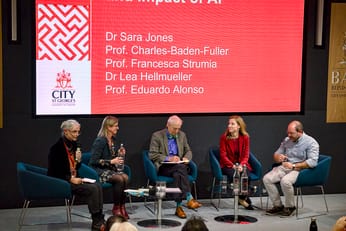
Social Media & UGC Verification
A basic guide to misinformation, disinformation and verifying content found on social media.
Table of Contents
Misinformation versus Disinformation
We try yo avoid the term “Fake News” when talking about verification. It's both been weapon sided against us, and is a little too vague to be useful. There are two distinct categories of “Fake News” on social. Let's look at each of them in turn.
Misinformation
Misinformation is accidental. People are not setting out to deceive: they just get things wrong for any number of reasons:
- Context collapse is a common one: people share a joke amongst friends, a faked image, for example. But as it spreads further and further, the original context gets lost. People start taking it seriously, and believing it. And then, the harried journalist who is short of time, makes a bad mistake and runs with it without verification…
- A desire to participate is another. Big events or crises can create so much online attention that people have a desire to join in the discussions. Sometimes they contribute ideas or speculation about what is happening or why, that get taken as more truthful than they are. Sometimes this can lead to tragic results.
- Conspiracy theories have become increasingly common in recent years. As geopolitical instabilities grow, so too does people's psychological need to believe that something concrete is behind it all. Hence, conspiracy theories. They are not disinformation in most cases, because their advocates truly believe them to be the reality of the situation. And then they will actively promote them.
- Outdated information is another problem. People are terrible at reading dates on online articles, and tend to assume that everything they read is new, just because it's new to them. That can lead to them accidentally circulation outdated information as if it were current.
- Generative AI Hallucinations are the latest type of misinformation we have to content with. The very nature of these AIs means they tend to make things up (that's the “generative” part of “generative AI”…). As more and more publishers rush to put AI-generated content online without adequate checks, more and more hallucinations are going to get the stamp of authenticity.
The fact that this form of false information is accidental doesn't make it any less damaging, it just often makes it easier to spot.
Disinformation
Disinformation is intentional. People are putting falsehoods out there for their one reasons, knowingly, and without any caveats. The reasons for this range from the trivial to the very serious indeed.
- At the basic level, we have trolls in the original sense: people who just get off on causing disruption and winning attention online. They will often make things up to get attention during moments of crisis — or even just for the hell of it any any time.
- Some people set out to fool people. Targeted disinformation can be aimed at anyone. Sometimes it's part of a scam, sometimes it's just someone's desire to play the media for fools.
- Commercially-motivated disinformation is produced with profit in mind. This might be as simple as clickbait traffic generation, or it might be fake reviews or research, to make a scam product look real. This is only likely to increase with the advent of generative AI.
- Most seriously, we have state-sponsored misinformation operations. These were first reported on back in 2014, but in the past decade have become ever more sophisticated, and are now a major source of pollution of our online information ecosystems.
Examples of Misinformation and Disinformation
Here's some good examples:
In a lot of verification work, you'll come across this phrase, which is often shortened to UGC. It just means material foudnonline we are considering using in our reporting which hasn't been created by journalists. It is content generated by users of social platforms - hence the name.
Social Media Verification Guides
Given that our information ecosystem has been so polluted, social media verification should now be considered a core skill for journalists. Here's some resources to get you started.
First Draft
First Draft was a seven year long collaborative project on journalistic verification, Many of its guides and resources are still essential for building your skills. Here's a couple of sections worth exploring:


The (free) Verification Handbook
A really useful guide when getting started:

Bellingcat Verification Guides
The open source intelligence specialists have some useful guides:

Craig Silverman's newsletter
For over a decade Craig Silverman has been at the forefront on online verification. He publishes an irregular newsletter on these topics that's worth reading:











